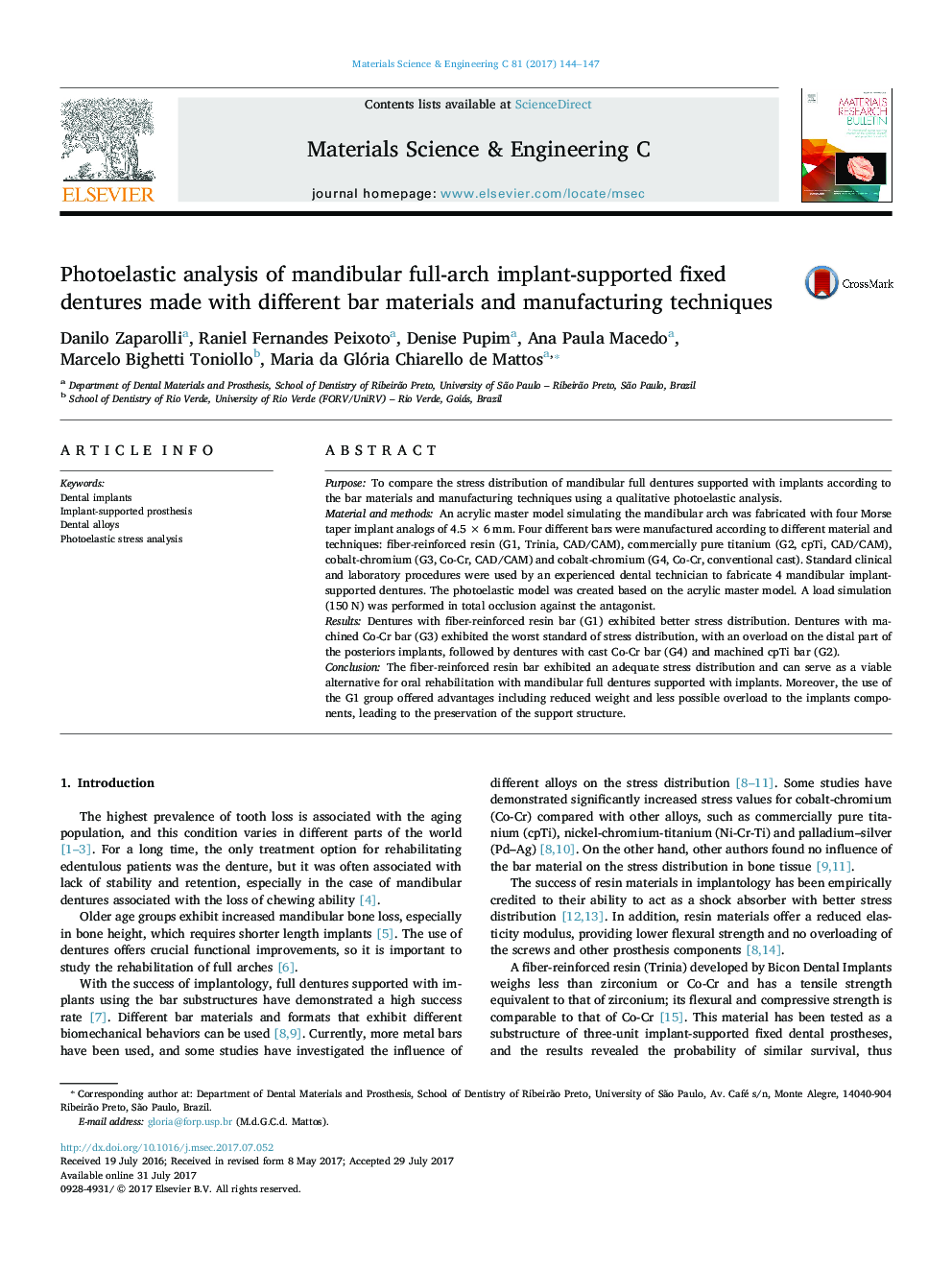| Article ID | Journal | Published Year | Pages | File Type |
|---|---|---|---|---|
| 5434223 | Materials Science and Engineering: C | 2017 | 4 Pages |
â¢A fiber-reinforced resin bar offers better stress distribution.â¢Conventional casting is associated with high stress concentrations.â¢Short implants can be a viable alternative for cases with severe bone resorption.
PurposeTo compare the stress distribution of mandibular full dentures supported with implants according to the bar materials and manufacturing techniques using a qualitative photoelastic analysis.Material and methodsAn acrylic master model simulating the mandibular arch was fabricated with four Morse taper implant analogs of 4.5Â ÃÂ 6Â mm. Four different bars were manufactured according to different material and techniques: fiber-reinforced resin (G1, Trinia, CAD/CAM), commercially pure titanium (G2, cpTi, CAD/CAM), cobaltâchromium (G3, Co-Cr, CAD/CAM) and cobaltâchromium (G4, Co-Cr, conventional cast). Standard clinical and laboratory procedures were used by an experienced dental technician to fabricate 4 mandibular implant-supported dentures. The photoelastic model was created based on the acrylic master model. A load simulation (150Â N) was performed in total occlusion against the antagonist.ResultsDentures with fiber-reinforced resin bar (G1) exhibited better stress distribution. Dentures with machined Co-Cr bar (G3) exhibited the worst standard of stress distribution, with an overload on the distal part of the posteriors implants, followed by dentures with cast Co-Cr bar (G4) and machined cpTi bar (G2).ConclusionThe fiber-reinforced resin bar exhibited an adequate stress distribution and can serve as a viable alternative for oral rehabilitation with mandibular full dentures supported with implants. Moreover, the use of the G1 group offered advantages including reduced weight and less possible overload to the implants components, leading to the preservation of the support structure.
